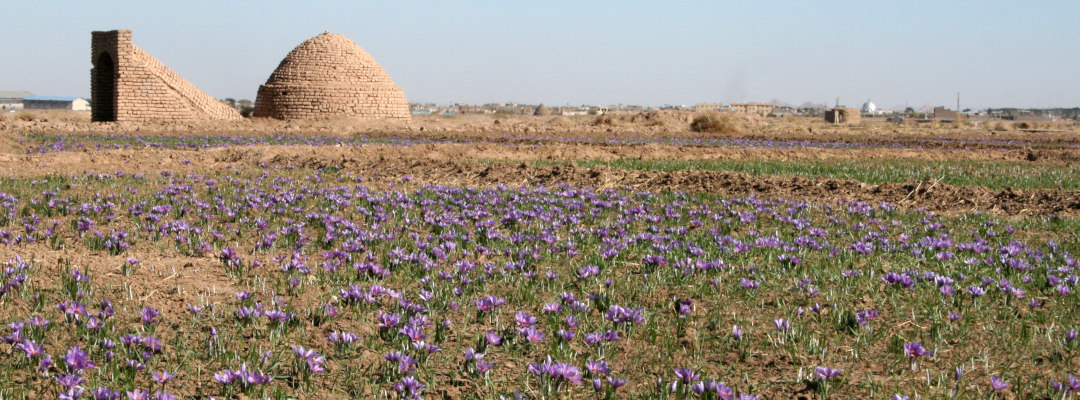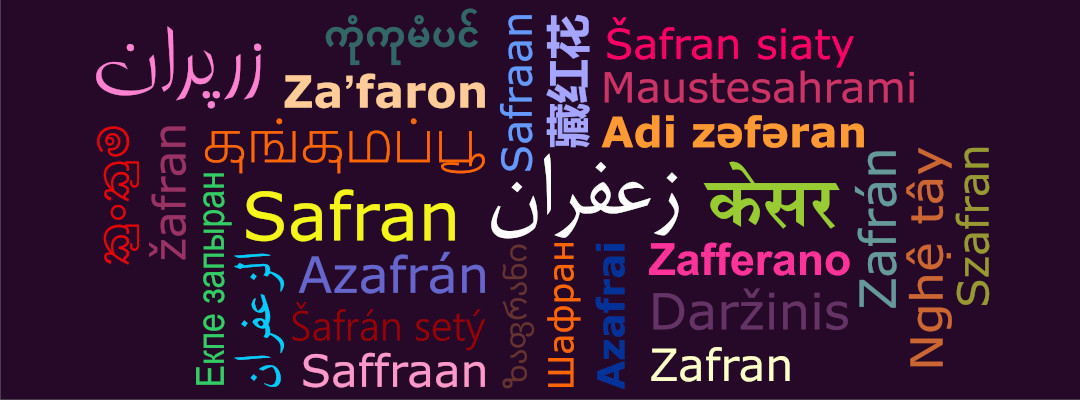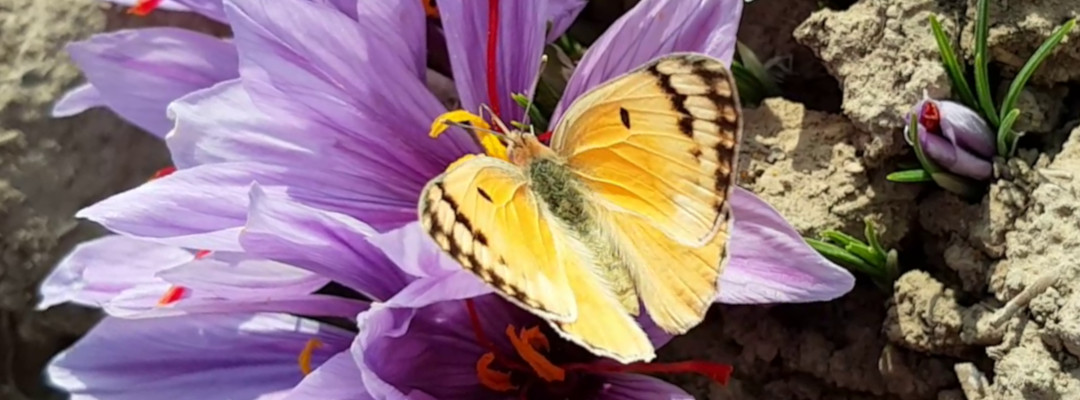Saffron - How did the name of saffron develop? |
|
Why is saffron called saffron? The name of the most valuable spice in the world has been developed over centuries. Right from the beginning the Persians were aware of the unlikely value of this oriental spice. The saffron effect represented an unimaginable benefit for the most diverse areas. Among many others it saffron has been used in culinary delights, trade, and health. |

|
Saffron and the origin of the name in Persia |
|
According to an ancient Persian legend, Persia's king Darius, about 500 BC, had delivered saffron from Ghaen and Gonabad for himself and his followers. He recognized the value of saffron and used the exquisite spice in the kitchen, as well as for coloring gorgeous robes. Usually the fabrics were woven in checkered pattern and was dyed with indigo as well as saffron. This made it possible to produce fabrics in the most varied colours and patterns. The use of saffron alone made these fabrics and garments of such high value that they were reserved exclusively for the wealthy and privileged. Originally the saffron was called “Sar-paran” or “Zar-paran”in Persian. The first syllable "Zar" is the Persian translation for gold. This already indicates the considerable value of the spice for the world then and now. "Par" means flower blossom and can be traced back to the saffron origin, which consists of the blossom of the purple crocuses (Crocus sativus). This is how the old Persian name “Zarparan”, "flowers as valuable as gold", developed. |

|
Saffron and the origin of the name in Arabic world |
|
When the Arabs came to Persia about 1400 years ago in the course of the spread of the Islamic faith, they also came into contact with the red gold of Persia through the enjoyment of Persian culture. In Arabic, however, there are some sounds or letters that do not exist in the Persian language. Among other things, this includes the letter "P". This is how the name of the spice known as “Zarparan “was changed. The entire ancient Persian language was changed and adapted to the Arabic language. For example, the word "Parsi" for Persian has been changed to "Farsi". Consequently, the word "Zarparan" was also converted to "Zafran". Thus, in many words the "P" was replaced by an "F". Thus, the new name "Saffron" was adopted and retained without further ado. The reason for the difference between "S" and "Z" is only the non-transferability of the Roman alphabet to the Persian alphabet. And even today saffron plays an important role in the life of modern Persians in Iran. The word "saffron" is constantly heard in everyday life. Saffron is indispensable in Iran as a common cure, a beauty product and a unique culinary spice. |

|
|
Safran - das rote Gold aus Persien (deutsch) Saffron - the red gold from Persia (English) Azafrán - el oro rojo de Persia (español) Zafferano - l'oro rosso della Persia (italiano) Safran - l'or rouge de Perse (français) Шафран- красноезолотоизПерсии(русский) ران- الذهبالأحمرمنبلاد فارس(Arabic) زعفران- طلای قرمزازایران(Persich) කුංකුම- පර්සියාවෙන්රතුපාට(Sinhala) குங்குமப்பூ- பெர்சியாவில்இருந்துசிவப்புதங்கம்(Tamil) 藏红花- 来自波斯的红金(Chinese) केसर- फारससेलालसोना(Hindi) |
